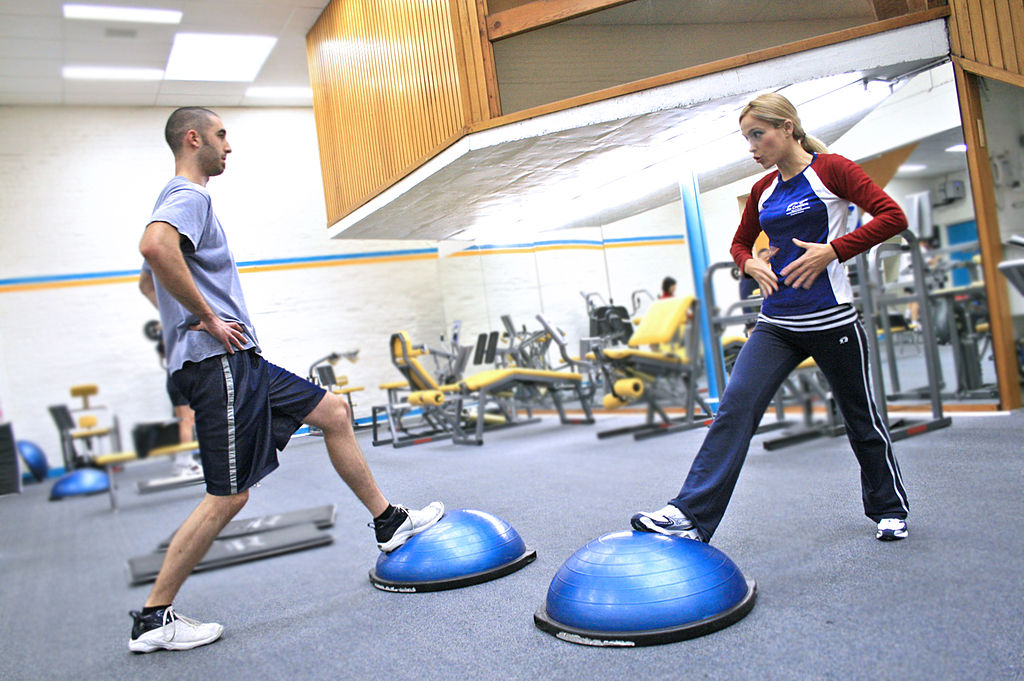Common Stretches and Exercises That Actually Mess up Your Body

By:
We've all heard that before and after any good workout, you should do some quality stretching.
Stretching before exercise is recommended because it increases flexibility, which can mean less injuries. But what your angry P.E. coach maybe didn't tell you is that not all stretches are created equal. In fact, some of them do more harm to your body than good.
ATTN: spoke with Dr. Marissa Bass of Bass Chiropractic to get the real story on which stretches and exercise moves are actually bad for you. One should keep in mind that Dr. Bass' advice is aimed towards those who are not professional athletes, but those who are new to stretching and exercising.
1. Toe touches
Either you're thinking, "Seriously? You're telling me not to touch my toes?" or "Ha, joke's on you, I can't touch my toes anyway!" so let's clear up a few things. As with most stretches, it's about how you touch (or don't touch) your toes.
"The problem is that toe touches are typically done as fast movements," Bass explains. "A layperson thinks, 'oh, I'm just stretching' but really, you're hurting yourself, because you're tearing at muscle. There's a progression about how you have to go about stretching."
2. Sit ups
No sit-ups? How can one possibly feel like they're starring in their own personal workout montage without including sit-ups? "People think of sit-ups as a basic go-to," Bass says. "The problem with sit-ups is that most people will activate their lower back instead of actually using their abdominal muscles. When I see people coming in with a chronic lower back problem, that's one of the first things I cut them off from."
3. Leg lifts
Dr. Bass is not fond of leg lifts: "Very hard on the lower back. You can do them if you bend both your knees, if you have a spotter, and always maintain a neutral pelvis." Why? "Any kind of movement loaded with a weight, or the body's own weight, not in a neutral alignment will push and compress that dysfunction more and more to the point you'll throw your back out. I've seen people need cortisone shots. They get spasms." That doesn't mean, never do them. It just means that, "leg lifts are not the kind of movement I would ever give anyone to start with."
4. Running
Newbies should not think that all they have to do is throw on a pair of sneakers and just start running. Dr. Bass refers to this as "cold turkey exercising" and calls it risky. "Running can create unstable joints which start to wear on your knees. The wearing down of a runner's knee can be pretty intense. If you're going to run, I would recommend starting on a treadmill, not on pavement, which can be uneven. It can turn into a knee problem, an ankle issue, or a back problem."
5. So what are some good exercises or stretches we can do?
Surely not every seemingly simple stretch is a path to injury, right? Here's one stretch Dr. Bass recommends: "Put your hands on a bar or wall in front of you, perpendicular to floor, like you're in an upside L shape. That would be a good way to decompress the spine." Here are more suggestions.
6. Squats
"Squats are good. Really solid," suggests Bass. And you don't need any equipment and can do them basically anywhere. Just make sure that when you squat, you're not letting your knees "cave" in, advises Fitness magazine. You want to squat straight down, as though you're about to sit into a chair.
7. Balance exercises
 LocalFitness.com.au/Wikipedia
LocalFitness.com.au/Wikipedia
Bass recommends using a BOSU ball for balance. Start by alternating standing on each leg. But it's not about stretching the legs. It's about strengthening the core. "A lot of core activation is really important for the spine," she said. "The movements are very small and precise. If you learn how to activate your core, your back will be protected." Bass recommends that once in proper form, you should hold any stretch for 20 seconds.
8. Swimming
If you've got access to a pool or some large body of water, you are in luck. Swimming is a good choice because, "it's not hard on the joints, and a great way to get exercise," Bass said. Women's Health magazine also praises swimming as a workout to burn calories and tone muscle.
One last tip:
"I think people become obsessed, thinking, 'I have to start stretching, I have to start working out,' and that's when people get injured," Bass explained. "It's not a race. It's a progressive experience. Your body has to get warmed up. I do yoga every day, and in the beginning, with certain poses, I was a mess. But now, I can feel my body open up. It takes time. There's an element of patience involved."
